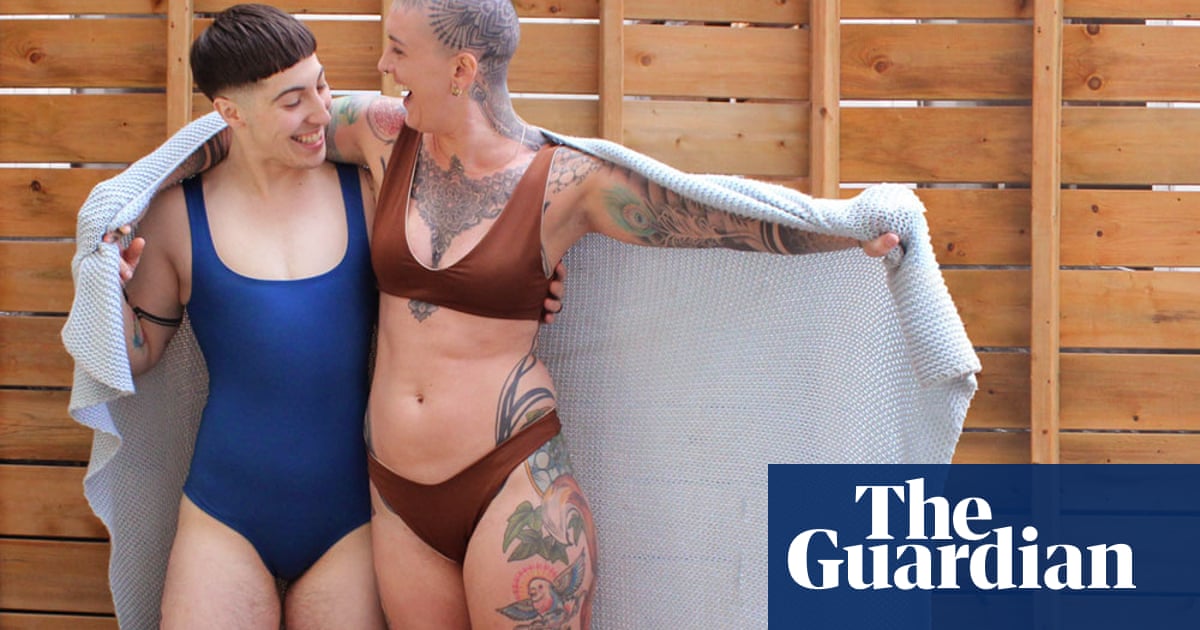Non-binary finery: can genderless fashion move beyond a label? - 4 minutes read

Sometimes, it’s not terribly clear. Often, genderless collections from brands like Bonds and Uniqlo are just unisex tracksuits and streetwear, rebranded as though it’s radical for women to wear trousers in 2022. Rarely do they include gender-affirming gear like chest binders and tucking lingerie.
So when it comes to courting trans and non-binary customers, there is a danger that the gender-inclusive label can be empty pinkwashing – branding that lulls shoppers into a false sense of security without offering anything material such as fit, function, and knowledgable customer service.
In 2021, Afterpay — naming-rights sponsor of Australian fashion week — launched a “genderfree” online shop. The infinite-scroll interface features quotes from queer and trans luminaries like Alok Vaid-Menon (“Any article of clothing should be for anyone who wants to wear it”) alongside items from brands like Levi’s, Jeffrey Campbell, Birkenstock and Shein.
Yet inclusive intentions only stretch so far. Most of the items listed in the Afterpay shop only fit limited sizes and shapes, and once you click through to a merchant partner’s site to complete your purchase, the gender binary resurfaces like a pop-up ad: the Levi’s website, for example, is divided into men, women, kids and accessories.
“With anything we sell, we offer a certain amount of support to the person we’re selling it to. It’s great for companies to offer gender-free stuff but it could also give a young person the wrong idea about how they will be treated when they go and buy it,” Spencer says. “They might walk in [to] buy this gender-free item and still get misgendered.”
“You get to this tipping point though, where big brands that don’t really have the queer and trans experience start to capitalise on something that they’re seeing as a niche,” they say.
“I don’t think we should take the gender out of fashion,” Hill says. “Instead of ‘genderless’, there needs to be more of a fluidity of gender.
“The gender of a piece of clothing is whatever gender you feel when you wear it, and not that you have to fit into the gender of that piece.”
There are practical ways that designers can support fluidity and inclusivity. Hill’s brand, Origami Customs, specialises in gender-affirming swimwear and underthings handmade in Montreal. There are no sizing limits, and each item can be customised for the individual: a pair of undies, for example, can be made in different fits, fabrics, gusset widths and closures to accommodate different mobility and sensory needs – and whatever’s in your pants.
Hill describes their work as practical: clothes that you can “cut down a tree in” and wear to lounge by the pool, looking like a snack. Other trans designers include Gogo Graham, whose fantasy armour fashion, made from upcycled materials, draws inspiration from Studio Ghibli; Carmen Liu, a lingerie brand catering to trans women and girls; and Rebirth Garments, whose riotously patterned club-kid looks sit in sharp contrast to the bland minimalism that major brands often associate with gender inclusivity.
Cerio cites PayPal as an example of a company that will “whack a rainbow logo on” without backing it up. For years the company engaged in highly visible pride campaigns while simultaneously drawing criticism from LGBTIQ activists for their onerous policies around name changes; though in April of 2022, they committed to reviewing their policies after a US Senate inquiry. Worse still, she says, some companies court trans and gender diverse customers while donating to anti-trans politicians.
Spencer suggests companies could start with staff training, and rejigging the gender categories instore and online. “The cheapest thing they could possibly do is just change the language,” they say. That’s already happening at a few major retailers (including Bonds and Dangerfield) and even at the races: the Melbourne Cup’s long-running Fashions on the field competition announced on Wear It Purple day that it will do away with male and female categories, instead awarding the Best Dressed and Best Suited racegoers.
Rather than approaching trans and gender diverse communities as just another market to capture, fashion labels could also take the opportunity to rethink how they design for different bodies, the language they use around gender, and how their labour practices and manufacturing processes impact marginalised groups. Instead of a genderless label, it might mean refashioning the agenda to move beyond seasonal marketing campaigns, and into year-round inclusion.
Source: The Guardian
Powered by NewsAPI.org